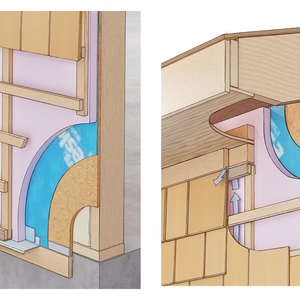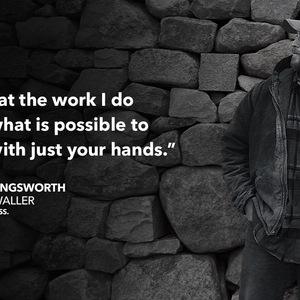i will be setting concrete in tubes at least 42″ below grade. under the deck footings can i use round river stone instead of gravel (compacted)? i have an old rock garden i would like to get rid of and it seamed like a good place to use up the stones.
Discussion Forum
Discussion Forum
Up Next
Video Shorts
Featured Story

Key proposals for the next edition of the International Residential Code tackle room sizes, stair specs, emergency egress, and deck guards, among other requirements.
Featured Video
How to Install Cable Rail Around Wood-Post CornersHighlights
"I have learned so much thanks to the searchable articles on the FHB website. I can confidently say that I expect to be a life-long subscriber." - M.K.
Fine Homebuilding Magazine
- Home Group
- Antique Trader
- Arts & Crafts Homes
- Bank Note Reporter
- Cabin Life
- Cuisine at Home
- Fine Gardening
- Fine Woodworking
- Green Building Advisor
- Garden Gate
- Horticulture
- Keep Craft Alive
- Log Home Living
- Military Trader/Vehicles
- Numismatic News
- Numismaster
- Old Cars Weekly
- Old House Journal
- Period Homes
- Popular Woodworking
- Script
- ShopNotes
- Sports Collectors Digest
- Threads
- Timber Home Living
- Traditional Building
- Woodsmith
- World Coin News
- Writer's Digest


















Replies
I vote yes. The compressive strength of stone is obviously very high, and the concrete will lock them in place. Seems like a waste of nice stones though.
It depends on what the soil is like at the bottom of the hole. If it's pudding, the rocks won't do a thing. If it's bedrock it will be a waste of your stones. Gravel helps promote water drainage below the footings. If your rocks are such that when you pour concrete, the rocks get fully encased in concrete, they won't do much good for drainage. Here in our city, we require 18" of gravel below footings if a structure is going to be constructed on silt. Silt is terrible for drainage so adding the gravel gets the water away from the footing a lot faster.
Use washed 3/4 gravel instead of the round stone and tamp it well. Put a 'bigfoot' sonotube base on the bottom of each tube.
You didn't specify your location; 42" indicates to me you are fairly far north. I assume you are going that deep to get below the frost line.
You might be able to sell that river stone to a garden center if you can get some neighborhood kid to bag it in 30 kilo sacks for you.
Dinosaur
'Y-a-tu de la justice dans ce maudit monde?
if the soil around is heavy impervious clay, the voids in the stone section will allow water to drain from the surronding soil into the stone space under the peirs, with the possibility that it will heavy when it freezes - bad.
but if the soil around allows drainage naturally, the stone will simply let the water drain away faster, collecting briefly in that space before heading off to sea. - good.
Welcome to the
Taunton University of Knowledge FHB Campus at Breaktime.
where ...
Excellence is its own reward!
What do you expect the gravel to do? Normally full-fractured gravel about as deep as the hole is wide is required to produce a solid gravel foundation for a post (in which case no concrete is really required). The fractured gravel spreads the load on a point out over a larger area. Pea gravel will slide around and will actually reduce the ability of the footing to sustain a point load.
Just spread the pea gravel under the deck in those areas where grass won't grow anyway.
I'm thinking the same thing about 16 inches diameter sonotubes placed on clay soil. My idea was to put 6 inches of pea gravel as a base, but I was wondering if because of the clay I would create a "tub" of water intrapped inside the 6 inches of pea gravel. Mmm. What do you think?